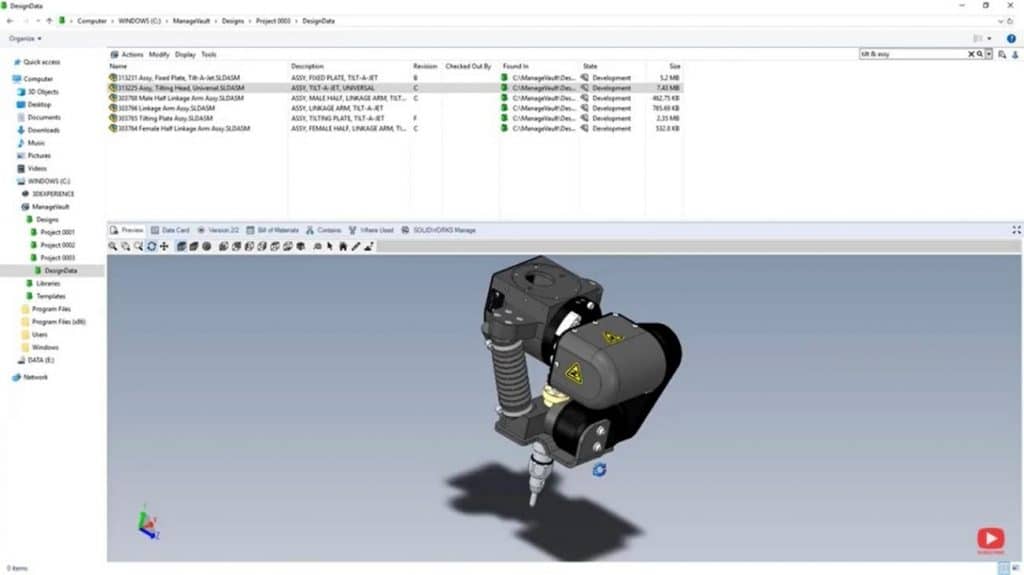Digital Marketing requires agility and precision. We need to ensure strategies that quickly respond to the market and meet its demands with the best targeting. There’s no escape: we need to work with data.
As companies are experiencing higher demands in the digital era, Product Data Management (PDM) activities are essential for data-driven product management.
A PDM area is responsible for collecting data about product development and generating information and insights to guide teams’ work and the company’s strategies. Thus, daily decisions and activities become more agile and based.
Now you will understand better what is Product Data Management and how this area can help your company create better products and sell more! Keep reading!
What is Product Data Management (PDM)?
PDM stands for Product Data Management. This work is the process of managing and sharing product and process data related to its development.
Product Data Management is often also the name given to the professional, business area, or software that enables this management work, as in the example below.

PDM system data is quite technical and includes:
- product models
- parts information
- dimensions
- supplier or vendor
- manufacturing instructions
- cost price
- requirements
- CAD designs
The system records and gathers data about the product on one platform. That information is primarily used by the engineering, design, and technology teams.
Then, employees use this data in product development and Product Lifecycle Management (PLM), from conception, design, production, until its obsolescence.
For this purpose, you must divide PDM functions into Product Data Management and Process Management.
Product Data Management deals with controlling the product’s structure and its parts. Also, with the classification of components and documents. Process Management covers workflows, such as approval processes for a product and design and engineering changes.
Although PDM was primarily created for the technical areas of product development, it’s now also accessed by other departments, such as marketing, purchasing, and sales.
By centralizing data on one platform, this system allows all teams to have access to accurate product information, which is useful when developing marketing campaigns or sales pitches, for example. Later in this article, you will understand how these areas use product data.
How important is data management in PDM?
Everything is moving fast in this era, from our lives to the market, and it imposes the need for digital transformation on businesses. Nowadays, companies that want to stay competitive need to improve their products and deliver solutions faster and at lower costs.
For that to happen, data is strategic. It makes processes smarter, minimizes decision risks, and increases the chances of good market performance. That is why successful products are data-driven.
Product Data Management activities and systems ensure the establishment of data-driven processes to optimize and accelerate product development and workflows. In this way, companies can meet increasing market demands.
Consider the scenario of a company that does not organize and centralize its product-related data and processes in automated systems. Several different teams and professionals keep the information manually, in their spreadsheets, with high chances of errors and disagreements.
Then, this lack of organization results in excessive failure and reworking in product development. These issues lead to time waste and increased costs, while the team could be focused on innovation and creating better solutions.
So, we realize the importance of PDM for improving internal processes and market performance.
What are the benefits of Product Data Management?
The principal role of PDM is the effective management of product development processes, which accelerates deliveries and increases business competitiveness.
Next, we will understand what benefits Product Data Management delivers to companies.
Increasing productivity
Organizing and centralizing data on a platform gives all professionals access to the correct information about the product. This work avoids the need for engineers, designers, and developers to search for data in different databases and then check if it’s correct.
In addition, PDM software allows you to automate many manual tasks in the process, such as creating material lists or reviewing technical drawings. It’s possible to automate these tasks to speed up workflow and increase staff efficiency.
Integration with other management systems, such as ERP, also helps to increase productivity throughout the company.
Maintaining quality standards
Product Data Management registers the correct data to use in product design and manufacturing. Therefore, the system ensures following standards throughout development work.
Also, process management helps control system revisions and change requests, which prevents teams from using outdated versions. Professionals can use designs and drawings already registered in the system instead of designing from scratch, which also avoids inconsistencies.
Accelerating market response
Unorganized and decentralized data slows down product development. Teams waste a lot of time on doubts, errors, and misunderstandings involving data, as well as the reworking caused by them.
By organizing data and automating tasks, PDM helps to increase organizational agility and reduce response time to the market.
Therefore, Product Data Management accelerates time-to-market, i.e., the period from conception to product launch, which is essential to meet consumer expectations.
Reducing development costs
Development errors lead to waste and reworking. Each time an engineer has to redo a project, the company wastes time and resources. Also, there are chances of affecting the product quality.
Adopting a PDM also contributes to reducing operational costs for product development.
Facilitating collaboration between teams
PDM software is a shared repository of product data that makes it easier for teams to collaborate. They access the same channel of information to support their technical work and development decisions.
The data integration also helps other areas to follow the development processes. It’s essential that marketing staff know the production deadlines to plan the launch campaign for the product or that buyers know parts specifications to purchase the correct materials, for example.
In addition, PDM connects development and production teams. In this way, designers can recommend the best production methods, while the manufacturing team can keep track of the queue of projects in development, for example. This work ensures greater efficiency throughout the process.
Often, this connection is between professionals in different locations worldwide, which is essential for integrating the communication of global teams.
Enabling innovation
Improving communication and collaboration between teams opens the door for innovation. Different professionals can generate feedback and insights throughout the development process that bring innovative solutions to the product.
Increasing data security
A PDM system increases product data security through passwords and different levels of access. If they were on Excel sheets or spreadsheets, they could be subject to lose, theft, and virus infections, for example.
Any of these situations would bring significant losses to the company, as this data shows:

How can Product Data Management influence productivity?
Now we are going into a more in-depth look at the productivity gain, which is one of the main benefits of Product Data Management. That is because, as we have seen, the PDM software:
- centralizes data in one place
- automates manual tasks
- integrates with other management platforms
- reduces errors, costs, and development time
- make easy the collaboration between teams
This way, Product Data Management contributes to optimizing processes, speeding up deliveries, and supporting decisions.
But which results from PDM can we consider? To illustrate, we bring the case study of CP Manufacturing Inc., which used PDM software to develop recycling systems.
Data management through software supported a fast and sustainable growth of the company worldwide, mainly by allowing the automation of several processes. As a result, the development of recycling systems became four times faster.
How is product data used in marketing?
For product marketing, data management is essential to create strategies that connect with the audience, meet market needs and demands, and bring better returns for the brand.
However, it’s necessary first to explain the difference between the acronyms PDM and PIM. PDM stands for Product Data Management, while PIM stands for Product Information Management.
It sounds the same, right? Many people use these terms as synonyms.
However, there is a difference. While PDM aims at engineers, designers, and developers, PIM integrates product data with other business areas, primarily marketing and sales. To this end, PIM covers technical data about the product, but also descriptions, images, videos, and other materials that teams may need.
Like PDM, PIM also centralizes all information in one place for simplifying access, allow collaboration, increase productivity, and optimize processes.
Therefore, the Product Information Management area supplies the marketing and sales work with correct and updated product information. PIM also handles the processes related to their development to plan better strategies, align marketing campaigns, and create sales pitches.
For example, when salespeople conduct a sales approach, they need to take that information to leads and prospects. When the company needs to update its e-commerce or create layouts for a launch campaign, the team needs to access the PIM – often in an automated way, through cross-platform integration.
If a user makes a purchase on e-commerce, but when they receive the product at home, they realize the design does not match the photo in the online store or its description, this may show a problem or a lack of Information Management in the Product.
PIM, by the way, is essential for a scenario with increasingly dispersed sales and marketing channels. For an omnichannel operation, for example, which includes different online and offline sales channels, it’s essential to centralize information.
Therefore, accurate information is vital for the customer’s experience with your company. PIM ensures that the product information is consistent across all communication channels.
So, you can see how crucial product data management is for the entire company?
Product Data Management plays a vital role in ensuring that data is centralized, available, correct, and updated from product conception to marketing and sales.
So, if you want to know more about the importance of data in marketing, download the fourth edition of the Rock Content Magazine. You will learn all about the pillars of marketing through data. Enjoy it!
2024 State of Marketing Report
Your golden ticket to crush your goals with data-driven insights!
2024 State of Marketing Report
Your golden ticket to crush your goals with data-driven insights!









